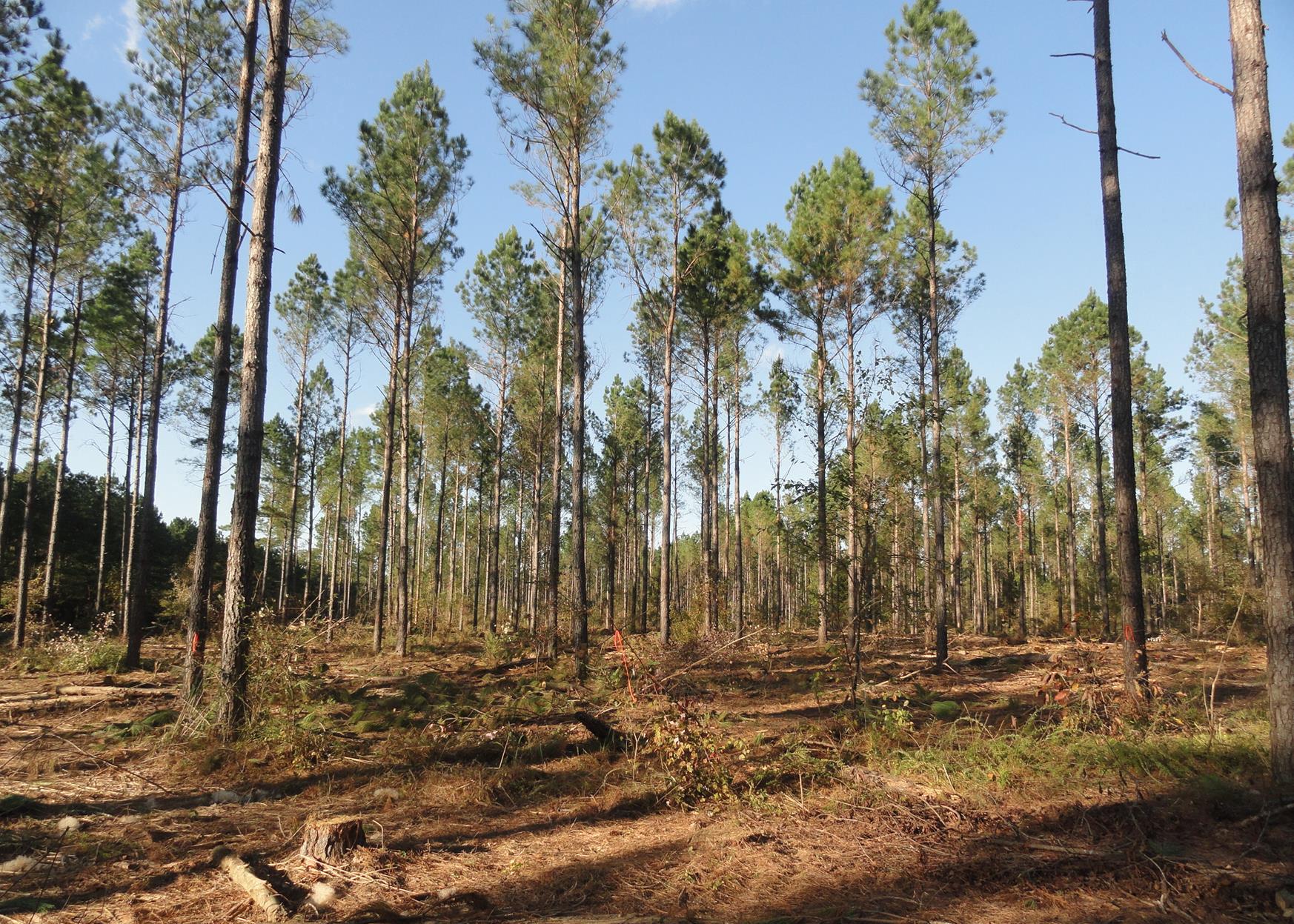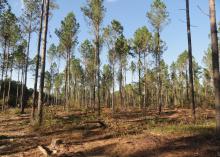Information Possibly Outdated
The information presented on this page was originally released on November 18, 2013. It may not be outdated, but please search our site for more current information. If you plan to quote or reference this information in a publication, please check with the Extension specialist or author before proceeding.
MSU forest serves as a research and teaching site
MISSISSIPPI STATE -- Scientists at Mississippi State University are transforming a piece of property in Oktibbeha County into a unique habitat for conducting research and teaching best land management practices.
In this forest, wildlife habitat and timber production are intertwined. Deer, turkey, quail and an array of grassland songbirds fill the land while healthy streams flow along its boundaries.
MSU Forest and Wildlife Research Center experts began working on the 550-acre property this fall. The land is a living laboratory that showcases proper land management.
MSU alumnus Lester Andrews donated the property, which is now part of the university’s Bulldog Forest. Andrews grew up in Starkville. His father was an agronomy professor and alumnus of MSU, which was named Mississippi A&M at the time. Andrews, who received a bachelor’s degree from MSU in chemical engineering, gave the land to provide research opportunities for scientists and students.
“I am a research scientist, and my father was a research scientist, so it is very gratifying for this land to become a living research laboratory,” said Andrews, a chemistry and research professor at the University of Virginia. “Having worked in a laboratory all of my life, I understand the need for research and the desire to demonstrate research discoveries to others.”
The property has sentimental value for Andrews. His father bought the property in 1979 and cleared it to farm soybeans. He and his father planted the property in pine trees in the winter of 1989.
“Pine trees flourish on the property, and there is evidence that deer and turkey use the property as well,” Andrews said. “A living laboratory seemed perfectly suitable for forestry and wildlife researchers to apply different management techniques and to keep the forest productive.”
The 23-year-old pine forest will be separated into areas to demonstrate forest production along with deer, turkey and bobwhite quail habitat.
The pine forest is currently at the age and stage of growth where a final thinning is needed, which provides an opportunity to thin the various areas to different levels and demonstrate how forest can be managed to address landowner objectives.
The first area will prioritize pine production for revenue generation and associated wildlife habitat values. Trees are being thinned from a basal area of 120 to a basal area of 80 square feet per acre, which is a cross sectional area of all remaining trees at breast height. The second area will emphasize deer and turkey habitat with trees thinned to a basal area of 60 square feet per acre, while the third area will be thinned to a basal area of 40 square feet per acre, to emphasize quail habitat.
In addition to thinning, MSU experts will employ a variety of land management strategies including prescribed fire, disking, mid-rotation brush control and a combination of fire and herbicide. They will reserve a control area that receives no additional management.
“One of the great features of this property is that we will be able to look at the volume and value of production on a per-acre basis to determine the differences between the different thinning and management regimes,” said Andy Ezell, head of the MSU Department of Forestry. “Obviously, the revenue-generating forest will provide more income. However, the demonstration forest will give us an opportunity to show landowners how different tree spacings can impact wildlife management and revenue. That’s invaluable.”
Wildlife biologist and associate Extension professor Bronson Strickland is also looking forward to demonstrating different management strategies to enhance deer, turkey and quail habitat and quantifying the economic tradeoffs of each strategy.
“There are already wide buffers, or corridors, surrounding the property. Those will be ideal for food plots for white-tailed deer and turkey,” Strickland said. “Prescribed burning on the property will encourage native plants to grow, which creates a source of food and cover for deer, turkey and quail.”
A road will allow vehicles into the demonstration forest so landowners and managers can view the different management techniques.
The eastern boundary of the property contains a stream edged by hardwood trees. This area will remain untouched to create a streamside management zone and to demonstrate how to manage hardwood trees for both profit and wildlife habitat.
As the forest reaches rotation age, researchers will replant at different times to demonstrate the different stages of forest and wildlife management.
Proceeds from the sale of the timber will help fund the demonstration forest and additional university programs for which Andrews has a passion, such as research in soil science, chemistry and music.
“I am pleased to establish a living laboratory in the university’s Bulldog Forest, which will also help to fund the things that I really care about,” Andrews said. “To know that the land will be managed as a research and demonstration laboratory is something that I am proud of, and I know that my father would be happy about this laboratory on our farm.”
Scientists hope to begin some demonstrations as early as next year. The full demonstration forest should be ready by the summer of 2015.







